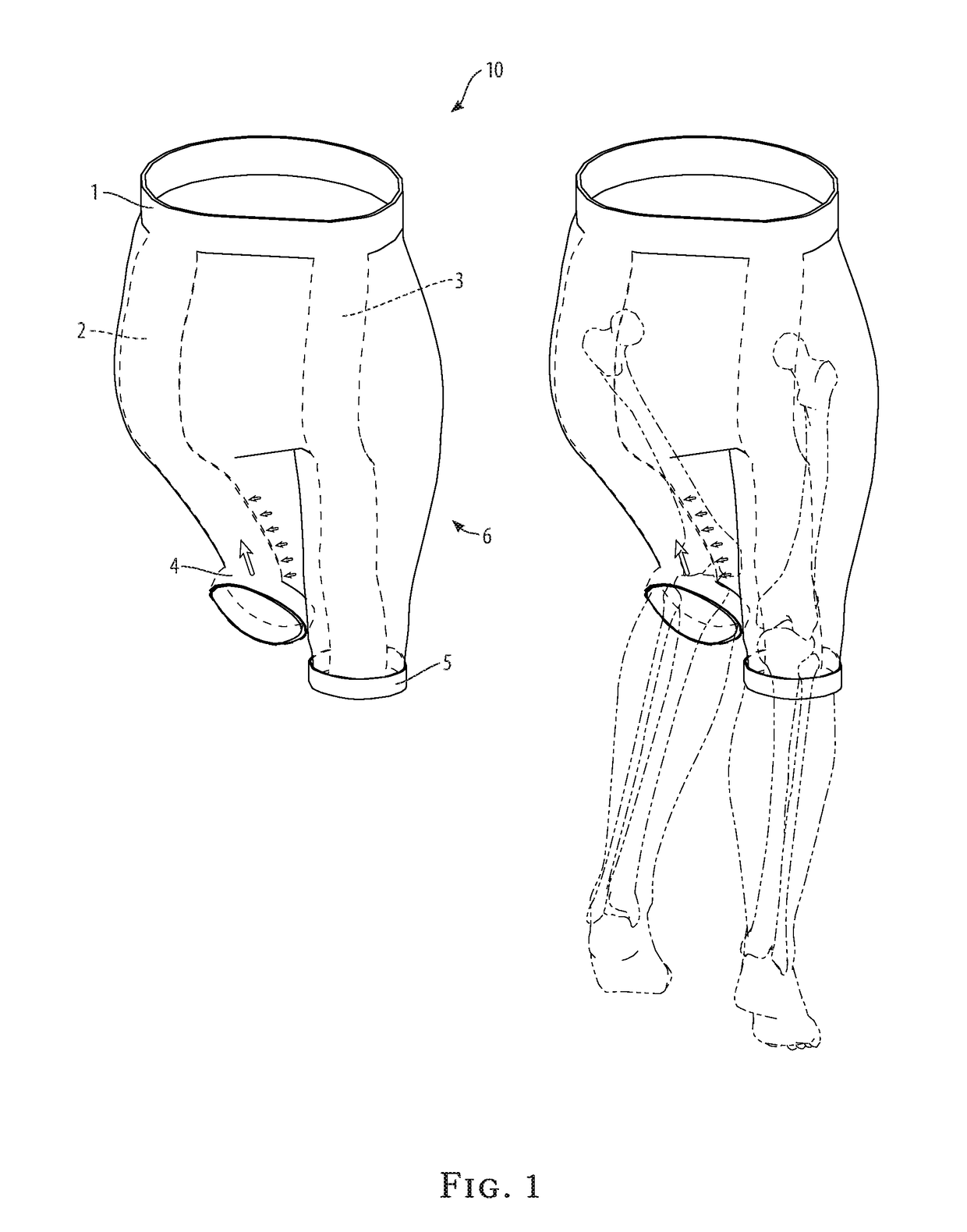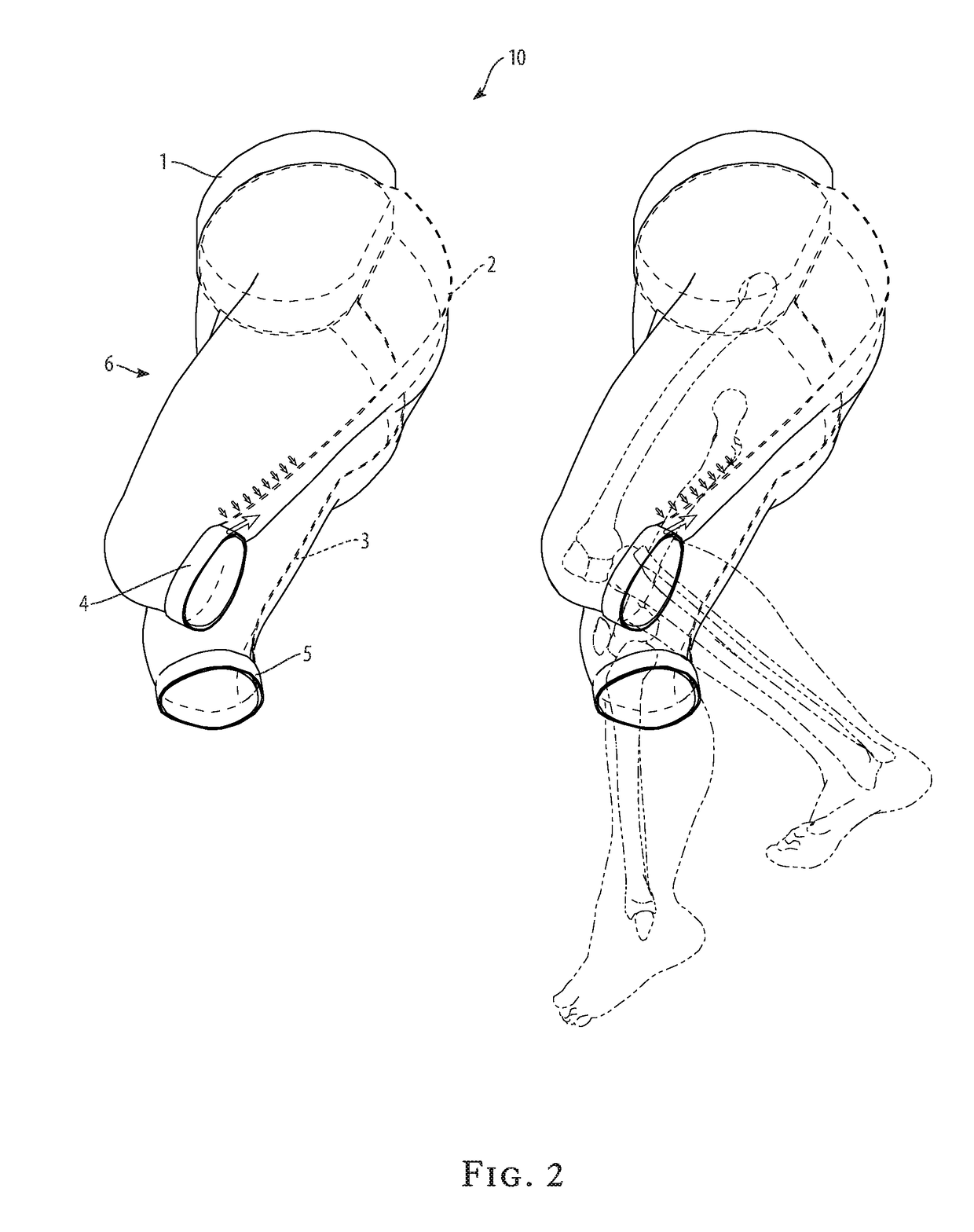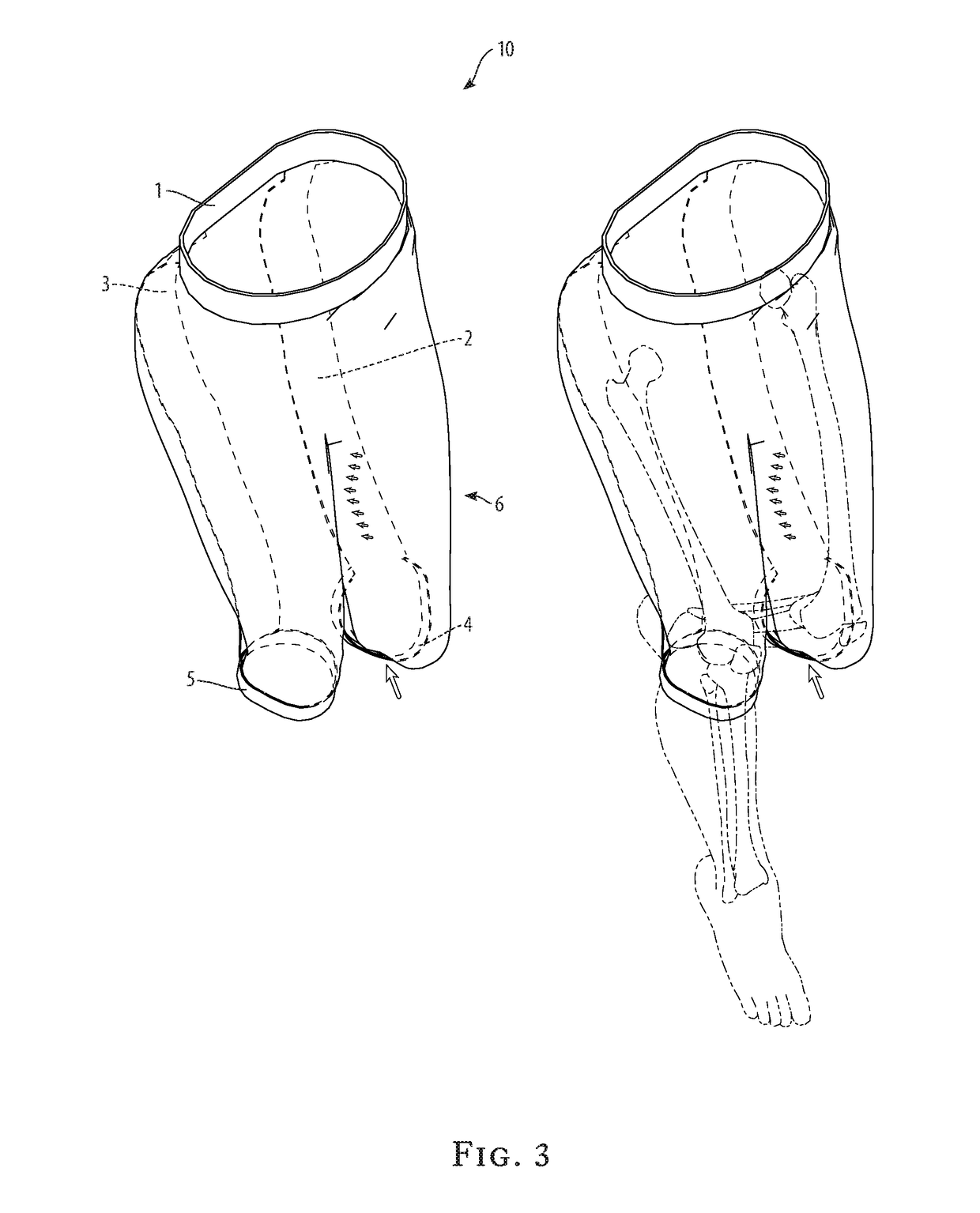Knee-acl support breeches system and method
a technology of knee braces and knees, applied in gymnastics, resilient force resistors, protective garments, etc., can solve the problems of increased acl tears, increased acl and other knee components, and the use of such a brace could actually slow down running and turning, so as to reduce the strain placed reduce the stress on the and reduce the effect of acl and other knee components
- Summary
- Abstract
- Description
- Claims
- Application Information
AI Technical Summary
Benefits of technology
Problems solved by technology
Method used
Image
Examples
Embodiment Construction
[0032]Referring to FIG. 1 and all of the figures generally, the knee-ACL support breeches 10 of the invention are shown.
[0033]A belt attached to the top opening of a pair of breeches 6 provides an anchor point relative to the hips of the athlete. The belt should be made of a material having little or no stretch, and should be fitted closely to the athlete's waist and hips. Buckles, snaps, hook-and-loop, or other such known fasteners can be provided to facilitate the wearing and the fitting of the belt.
[0034]Attached to the belt 1 are two calibrated-elastic bands, designated left calibrated-elastic band 2 and right calibrated-elastic band 3, corresponding to the legs of the athlete wearing the breeches. Each calibrated-elastic band is attached at an upper end to the belt 1, at locations on the belt corresponding to the athletes back, at the hips and above the buttocks.
[0035]The lower ends of the calibrated-elastic bands are attached to lower-knee straps, designated left lower-knee st...
PUM
 Login to View More
Login to View More Abstract
Description
Claims
Application Information
 Login to View More
Login to View More - R&D
- Intellectual Property
- Life Sciences
- Materials
- Tech Scout
- Unparalleled Data Quality
- Higher Quality Content
- 60% Fewer Hallucinations
Browse by: Latest US Patents, China's latest patents, Technical Efficacy Thesaurus, Application Domain, Technology Topic, Popular Technical Reports.
© 2025 PatSnap. All rights reserved.Legal|Privacy policy|Modern Slavery Act Transparency Statement|Sitemap|About US| Contact US: help@patsnap.com



